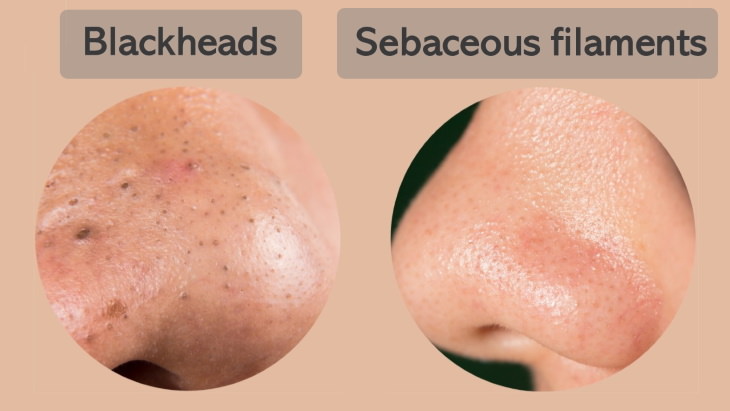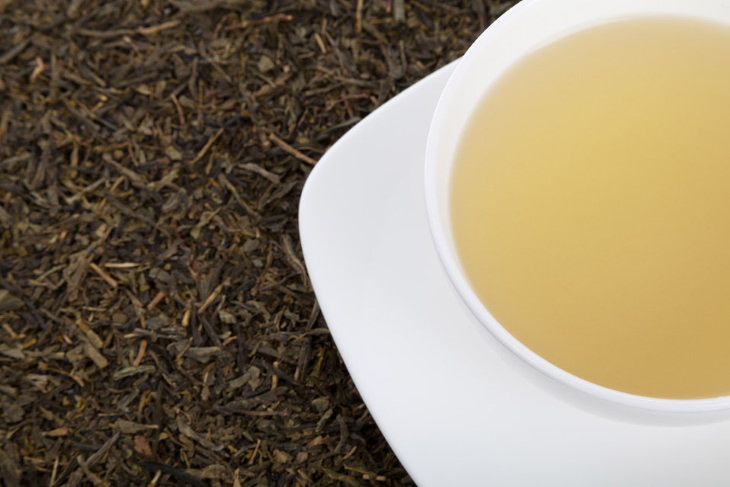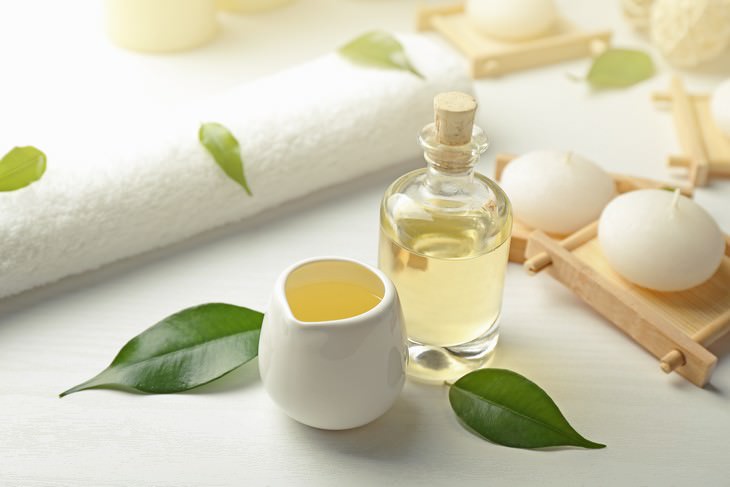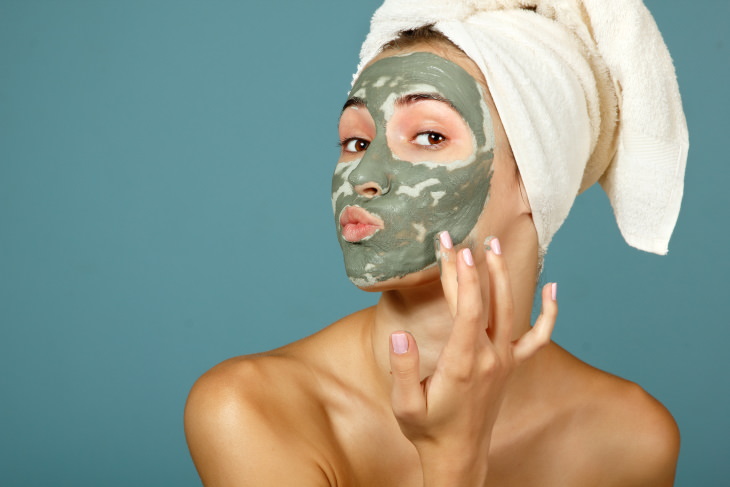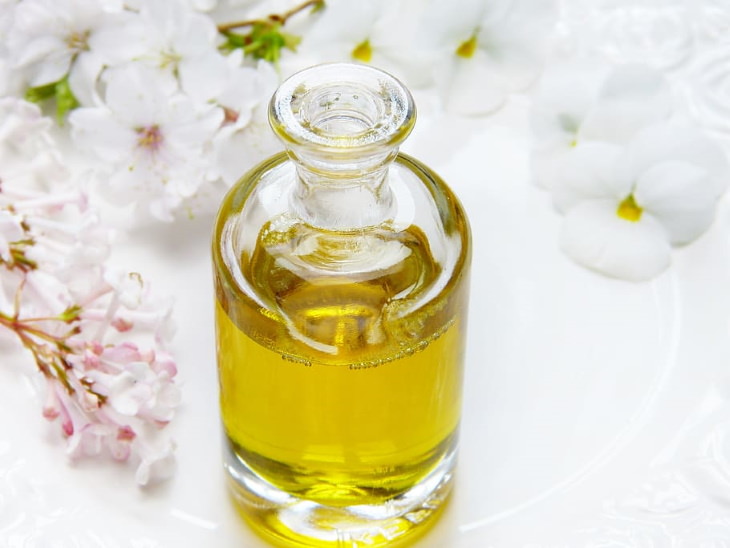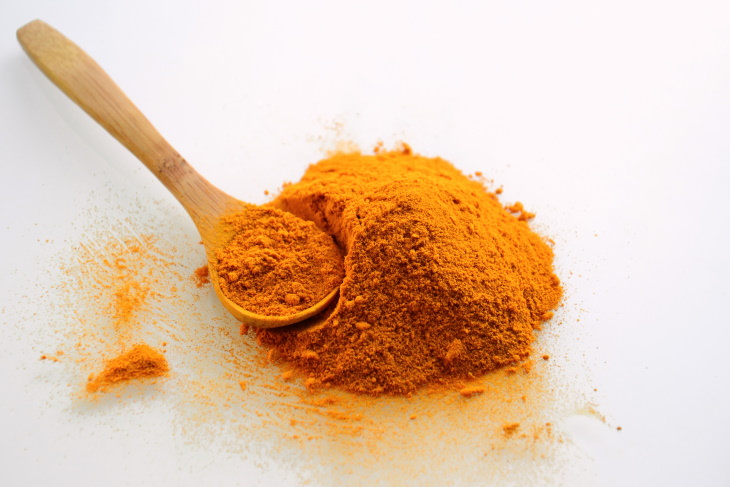Is It a Blackhead or Something Else?
We’re used to calling any pimple and sometimes just any enlarged pore a blackhead, but not all clogged or enlarged pores are blackheads. Blackheads are a type of acne that appears as dark spots that stretch out and clog up the pores, and their cousins are whiteheads - essentially the same spots, but located deeper in the pore. There are many causes of blackheads and whiteheads, ranging from poor diet, skin that's producing too much oil, hormonal changes, and even sebum (skin oil) oxidation by the sun. Importantly, blackheads should not be confused with other skin conditions that should be treated differently to blackheads, such as:
- Comedones - skin-colored bumps on the skin common on the forehead.
- Acne vulgaris - large red bumps or pus-filled pimples.
- Sebaceous filaments - small transparent or slightly greyish dots on the skin that are normal and should not be removed to prevent acne formation.
Dermatologists and estheticians suggest easier to prevent blackheads by maintaining a basic skincare routine than treat them once they appear, namely:
1. Cleansing the face daily or twice a day if you have combination or oily skin.
2. Using products that contain AHA or BHA (e.g. salicylic acid, glycolic acid, lactic acid, azelaic acid, and mandelic acid) on the skin twice or 3 times a week.
3. Moisturizing the skin daily each time you wash the face.
4. Wearing sunscreen daily to prevent the oxidation of sebum.
That being said, there are several extra at-home treatments you can do to get rid of and prevent blackheads (and whiteheads). Below, we featured 5 excellent natural treatments that use common household ingredients like green tea, turmeric, ice, and more. If you're struggling with clogged pores, whiteheads, or blackheads, we recommend you try out any of these useful and effective DIY recipes:
1. Green Tea Rinse
Green tea is an excellent ingredient for the skin: its anti-oxidant, antimicrobial, and anti-inflammatory benefits are known to reduce the amount of oil in the skin, hence reducing blackheads and whiteheads, and calm down any redness or inflammation in the skin, making it beneficial for acne overall. If used regularly, you can even brighten the overall complexion with green tea.
When putting green tea on the face, make a stronger brew than you normally would, putting 3-4 teaspoons of tea or 3 teabags per glass of hot water. Let the tea cool down, the colder the better, before putting it on the face, as the cold will make your pores look smaller. You can either splash some of the tea directly onto your face or apply some using a cotton pad. It's important to wash your face before using the green tea rinse.
For best results, use daily, and follow up with a moisturizer. You can store this homemade green tea toner in the refrigerator for up to 3 days.
2. Tea Tree Oil Spot Treatment
Similarly to green tea, tea tree oil has anti-inflammatory and antimicrobial properties, and it's even used to treat fungal skin and nail infections, psoriasis, dandruff, and promotes wound healing. The same properties make tea tree oil an excellent treatment for acne, blackheads, and whiteheads as well, and many people do manage to treat these issues with tea tree oil.
Do keep in mind, though, that tea tree oil is an essential oil, which means that it's extremely concentrated and so needs to be diluted with a carrier oil to avoid skin burns. The best way to use tea tree oil is as a spot treatment, applying it directly onto the blackheads. To do so, mix 1 tablespoon of any base oil of your choice (e.g. jojoba oil, rosehip oil, sunflower seed oil, grapeseed oil, but NOT coconut oil because it can further clog up the pimple) with 5 drops of tea tree oil and apply this mixture to spot 1-2 times a day.
3. Clay Mask
Clay is another super ingredient when it comes to acne and blackhead and whitehead removal and prevention, as it acts like a sponge, absorbing the excess oils from your skin and giving your pores a deep clean. Any type of clay will do the job, with kaolin clay being possibly the most popular for the skin.
To make a clay mask, all you'll need to do is mix the clay with a tiny amount of water so that the clay powder forms a thick paste, and then apply the mask on clean skin. You can keep the mask on for about 10-15 minutes, keeping it on for any longer will dry out your skin. Wash off the mask completely with lukewarm water, and follow up with a moisturizer.
If you have combination, normal, or dry skin, you can only apply the clay mask to the area where you have blackheads or where your skin gets oily, typically the T-zone or just the nose, and keep the other areas bare not to dry out your skin. You can do this mask 1-2 times a week.
4. Facial Oil Massage
People who have blackheads or oily skin are typically afraid to use oils on their face, but they really shouldn't, as oils can really help them erase the blackheads from their skin for good. Do keep in mind, however, that you shouldn't use coconut oil on your face, since it can be comedogenic for some people, meaning that it can be pore-clogging.
Instead, use neutral oils like grapeseed oil, jojoba oil, rosehip oil, sunflower seed oil, or others on the skin. We have previously written about oils beneficial for the skin, so to see more oil options and read about the benefits of each oil, follow this link: 6 Beauty Oils That Reverse the Signs of Skin Aging.
For this specific method, you will be washing off the oil and cleansing your face afterward, so no need to use an expensive facial oil, any oil cleanser or inexpensive carrier oil will do the job. All you will have to do is apply the oil on the skin and start massaging the face in small circular motions, focusing on the areas where you have clogged pores and blackheads. Massage for several minutes until you see small black lines - oil plugs and blackheads - start emerging from the skin. When all of these are gone, wash off the oil with warm water and a cleanser. Follow up with a moisturizer.
5. Turmeric and Oatmeal Mask
We hardly need to remind you of the amazing anti-inflammatory and antioxidant properties of turmeric, but when it comes to the use on the skin, it has one drawback - it can stain. However, some beauty experts point out that one specific variety, namely Kasturi turmeric, doesn't stain the skin. We'd still be careful if we were you, though, so we recommend wearing gloves and clothes you don't mind staining when applying this mask.
The second ingredient in this mask is a calming and anti-inflammatory ingredient as well - oatmeal. In addition, the ground oatmeal will provide a gentle exfoliation on the skin, which also benefits clogged pores.
To make this mask, combine 1 tablespoon of ground oatmeal, half a teaspoon of Kasturi turmeric powder, and about 1 teaspoon of water to create a thick paste. If necessary, add more water. Apply the mask on the entire face or just the area that's prone to blackheads and whiteheads and leave on for about 7-10 minutes. Wash the face before and after using this mask and follow up with a moisturizer.

